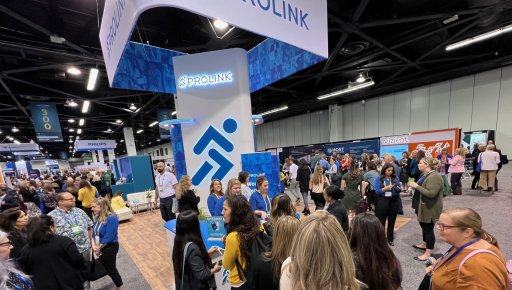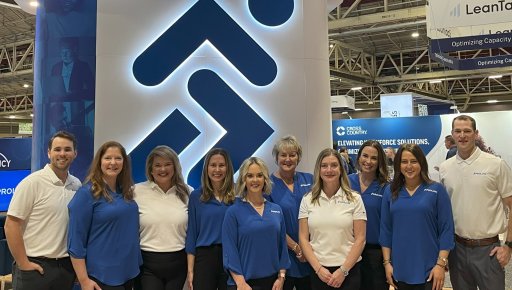The healthcare industry is undergoing a transformative period marked by an increasing demand for services, evolving patient needs, and a rapidly changing technological landscape. In this dynamic environment, healthcare organizations are faced with the critical challenge of acquiring and retaining skilled personnel.
The effectiveness of healthcare delivery relies heavily on the competence and dedication of the staff, making talent acquisition a pivotal aspect of organizational success in healthcare systems. This article explores the current trends in healthcare staffing and examines how the industry is embracing innovative approaches to attract and retain top talent.
Healthcare Staffing Trends That Impact Recruitment
In recent years, healthcare staffing trends have undergone significant transformations, profoundly influencing the recruitment landscape in the industry. One notable trend is the increasing demand for flexible staffing solutions, driven by the need for adaptability in the face of unpredictable patient volumes and evolving healthcare delivery models. The rise of locum tenens and temporary staffing arrangements allows healthcare organizations to maintain workforce flexibility while efficiently managing fluctuating demands.
Additionally, the growing emphasis on technology in healthcare has given rise to a demand for specialized IT professionals, further diversifying the skill sets required in the industry. The Covid-19 pandemic accelerated the adoption of telehealth, leading to an increased demand for virtual care professionals and a shift towards remote work opportunities.
Furthermore, the focus on diversity and inclusion has become a key consideration in healthcare recruitment, as organizations recognize the importance of fostering a workforce that mirrors the diversity of the patient population. These trends collectively shape the healthcare staffing landscape, necessitating a proactive and agile approach to recruitment strategies.
Growing Demand for Healthcare Services
The healthcare sector is experiencing a surge in demand due to several factors, including an aging population, the prevalence and treatment of chronic diseases, and advancements in the medical equipment and treatments. The Covid-19 pandemic further accentuated the need for skilled healthcare professionals, putting additional pressure on an already stretched health workforce and system.
Challenges in Talent Acquisition
Despite the increasing demand, healthcare organizations face unique challenges in recruiting and retaining qualified staff. These challenges include a shortage of specialized professionals, high turnover rates, age, and the need for a diverse workforce that reflects the varied hospital patient demographics.
Rise of Locum Tenens and Travel Nursing
The pandemic has increased the demand for flexible staffing solutions. Locum tenens, where healthcare professionals work on a temporary or contract basis, and travel nursing, which involves healthcare professionals taking short-term assignments in different locations, have become more prevalent. These models provide organizations with the agility to address fluctuating patient volumes and staff shortages.
Technological Advancements and Increased Emphasis on Digital Skills
The pandemic has accelerated the adoption of digital health solutions, emphasizing the need for healthcare professionals with strong digital literacy. Technology is rapidly transforming healthcare, influencing not only patient care outcomes but also staffing processes. The integration of electronic health records (EHRs), telemedicine, and artificial intelligence (AI) has created new opportunities for efficiency and better healthcare quality and has opened up innovative avenues for talent acquisition.
Staff with expertise in telehealth, remote monitoring systems, and data analysis are now in higher demand, reflecting the industry's shift towards a more technology-driven approach.

Embracing Innovations in Talent Acquisition
One of the key trends reshaping healthcare staffing is the increasing reliance on technology in the recruitment process. Traditional methods of recruitment, such as job fairs and paper resumes, are gradually being replaced by digital platforms and artificial intelligence (AI) tools. These technological advancements not only streamline the hiring process but also enhance the ability of healthcare organizations to identify and attract top talent.
"Leveraging technology into your organization not only reduces turnover and improves performance, but it is also offers the best strategy to overhaul your company’s culture and ensure its ‘corporate DNA’ reflects the ideal workforce to take your organization to the next level," said Danielle Miller, Chief Nursing Officer, writing for Hospital News in 2018.
Digital platforms, such as online job portals and social media networks, have become integral components of healthcare recruitment strategies. These platforms provide a vast and accessible pool of potential candidates, allowing healthcare organizations to cast a wider net when searching for the right talent. The use of targeted advertising on social media, for example, enables healthcare employers to reach specific demographics and engage with potential candidates in a more personalized manner.
Artificial Intelligence in Recruitment
Artificial intelligence has gained prominence in the recruitment process, offering solutions that streamline and enhance talent acquisition. AI algorithms can analyze vast amounts of data to identify suitable candidates, predict potential turnover, and even assess cultural fit within an organization. This not only saves time but also improves the accuracy of candidate selection.
AI-powered recruitment tools can analyze large datasets to identify patterns and trends in candidate profiles, helping recruiters make more informed decisions. Machine learning algorithms can predict the likelihood of a candidate's success in a particular role based on their skills, experience, and other relevant factors.
Healthcare organizations are increasingly relying on data analytics to drive their staffing decisions. Analyzing historical staffing patterns, turnover rates, and other workforce metrics enables organizations to make informed decisions about recruitment, retention strategies, and resource allocation. This data-driven approach not only saves time but also enhances the efficiency and accuracy of the recruitment process.
Telemedicine and Remote Work
In addition to digital platforms and AI, telemedicine is emerging as a transformative force in healthcare staffing. The adoption of telemedicine has not only revolutionized patient care but has also impacted the way healthcare organizations approach talent acquisition. The rise of telehealth services has created new opportunities for healthcare professionals to work remotely, breaking down geographical barriers and expanding the talent pool, enabling organizations to tap into a geographically diverse workforce.
Remote work opportunities have become more prevalent, allowing healthcare professionals to provide services from a distance. Telemedicine allows for healthcare systems, hospitals and organizations to tap into a global workforce, accessing specialized skills and expertise regardless of the physical location of the candidate. This not only addresses staffing shortages for primary care physicians but also promotes diversity and inclusion in the healthcare system and workforce.
Collaboration with Educational Institutions
To address the shortage of skilled healthcare professionals, organizations are establishing partnerships with educational institutions. Collaborative programs, internships, and mentorship initiatives not only create a pipeline of qualified candidates but also allow organizations to shape the skills of future healthcare professionals to better meet industry needs.
Collaborating with educational institutions has emerged as a strategic and mutually beneficial solution in addressing healthcare staffing challenges. By fostering partnerships with universities, colleges, and vocational schools, healthcare organizations can actively contribute to the development of a skilled workforce while securing a pipeline of qualified professionals.
This collaboration extends beyond traditional recruitment methods, allowing healthcare providers to actively engage in curriculum development, clinical rotations, and internships. Students, in turn, gain real-world experience and exposure to diverse healthcare settings, enhancing their preparedness for the workforce.
Such symbiotic relationships not only address staffing shortages but also contribute to the overall improvement of healthcare education, ensuring that graduates are equipped with the latest knowledge and skills required in the rapidly evolving healthcare landscape. In essence, collaboration of healthcare practitioners with educational institutions becomes a strategic investment in the future of healthcare delivery.
Talent-Centered Recruitment
Another significant trend in healthcare staffing is the shift towards a more holistic and candidate-centric approach. In the competitive landscape of healthcare recruitment, organizations are recognizing the importance of creating a positive and appealing candidate experience. This involves not only attracting candidates but also ensuring that the recruitment process is transparent, efficient, and respectful of the candidate's time and effort.
Diversity and Inclusion Initiatives
Diversity and inclusion have become central themes in healthcare staffing. Recognizing the multifaceted dimensions of diversity, healthcare organizations are proactively implementing strategies to attract and retain professionals from varied backgrounds, including race, ethnicity, gender, sexual orientation, and socioeconomic status.
Beyond fulfilling ethical imperatives, diverse teams enhance the quality of patient care by bringing a breadth of perspectives and experiences to the table to treat patients. Inclusive healthcare environments also contribute to improved patient satisfaction and outcomes, as patients are more likely to feel understood and respected when interacting with a diverse group of healthcare providers.
Healthcare recruiting initiatives prioritize breaking down barriers to entry for underrepresented groups, offering mentorship programs, and establishing partnerships with educational institutions to broaden the talent pipeline. Cultural competency training for existing staff further ensures that healthcare professionals can effectively navigate and respond to the diverse needs of their patient populations.
By actively championing diversity and inclusion, health services organizations not only strengthen their workforce but also contribute to reducing health disparities and fostering a more equitable and compassionate healthcare system for all. In the ever-evolving landscape of healthcare, these initiatives are indispensable for building resilient and responsive teams capable of addressing the unique challenges presented by diverse patient populations.
Utilization of Social Media
The use of social media in talent acquisition has become increasingly prevalent. Healthcare organizations are leveraging platforms like LinkedIn, Twitter, and Facebook to connect with potential candidates, showcase their workplace culture, and actively participate in discussions within the healthcare community. This approach allows organizations to engage with a broader audience and build a strong employer brand.
Recruiters leverage these platforms to showcase their institution's culture, highlight job openings, and engage with potential candidates. Social media offers a more personalized and accessible approach, allowing recruiters to reach a wider audience and target specific demographics. Professionals, in turn, use these platforms to stay updated on industry trends, network with peers, and actively seek new career prospects.
The real-time nature of social media fosters rapid communication, enabling recruiters to efficiently connect with qualified candidates. Overall, the integration of social media into healthcare recruitment strategies has proven instrumental in fostering a dynamic and interconnected healthcare workforce.

Future Directions in Healthcare Staffing
Advanced Training and Upskilling
The rapid evolution of our healthcare systems and technologies necessitates ongoing training for existing staff. Upskilling programs that focus on digital health systems, literacy, medical devices, data analytics, and the use of emerging technologies in preventive care will become integral to ensure healthcare professionals remain at the forefront of industry advancements.
Continued Embrace of Remote Work
The success of remote work in healthcare during the pandemic has opened the door for continued acceptance of flexible work and life arrangements. This not only provides a low cost solution to staffing shortages in hospitals and health systems but also enhances the work-life balance for healthcare professionals.
Integration of Virtual Reality (VR) and Augmented Reality (AR)
The use of virtual reality and augmented reality in healthcare training is gaining traction. These technologies can simulate real-world scenarios, allowing healthcare professionals to enhance their skills in a safe and controlled environment. In terms of talent acquisition, organizations can use VR and AR to have clinicians provide virtual tours of facilities and immersive experiences for patients that showcase their workplace culture.
Expansion of Collaborative Models
Collaborative staffing models, where healthcare professionals work across different facilities or within interdisciplinary teams, will become more prevalent. These models can optimize resource allocation, enhance efficiency, and provide more healthcare professionals with diverse experiences.
Innovations in Recruitment Marketing
Recruitment marketing will continue to evolve, with organizations and healthcare providers employing creative and targeted strategies to attract talent. This includes the use of video content, digital tools, virtual job fairs, and personalized recruitment campaigns that highlight the unique aspects of working within a particular healthcare organization.
Conclusion
The healthcare industry is undergoing a significant transformation in its approach to talent acquisition. The interplay of factors such as technological advancements, demographic shifts, healthcare trends and the impact of the pandemic has prompted healthcare organizations to embrace innovative strategies in staffing.
From the integration of artificial intelligence in recruitment to the expansion of remote work opportunities and wellness, the industry is evolving to meet the challenges and opportunities of the future. By staying attuned to these trends and proactively adopting innovative practices, healthcare organizations can build robust and adaptable teams capable of delivering high-quality care in an ever-changing landscape.
Prolink can help your health system adapt to that landscape, with the flexibility to prioritize your organization’s diverse and dynamic needs and the scale to meet them with top talent. To see how a partnership with Prolink can help you navigate the changing healthcare market, click below.








